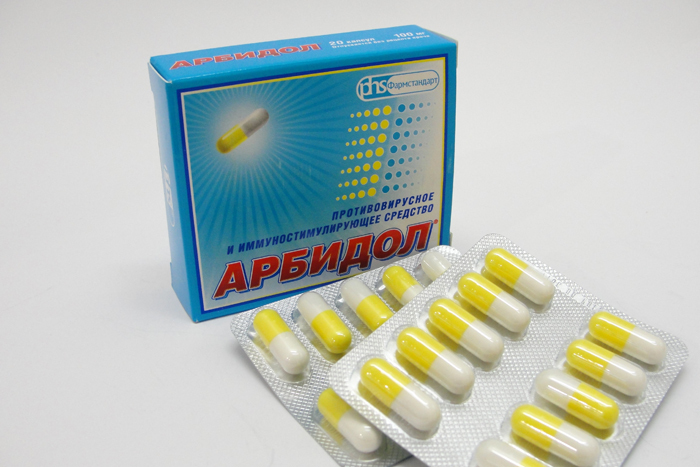
Functional dyspepsia: when and how to treat?
According to world statistics, the overall prevalence of symptoms of dyspepsia is an average of 25%. These figures include both organic and functional dyspepsia. [1]
Functional dyspepsia (FD) is characterized by symptoms such as pain, burning, early satiety, a feeling of fullness in the epigastrium after eating. Moreover, there are signs of PD in patients without organic lesions of the gastrointestinal tract. The mechanism of occurrence of PD is not fully understood, but is assumed gastrointestinal dysmotility, visceral sensitivity and increased gastric acid secretion [2].
Despite the high prevalence of PD, such a diagnosis almost did not appear in the Russian practice. Doctors prefer to use the term "chronic gastritis".
What is the relationship between these two diseases?
Chronic gastritis - morphological diagnosis, characterizes the degree of damage to the gastric mucosa and is not necessarily accompanied by clinical manifestations. Functional dyspepsia - diagnosis, reflecting the presence of the patient's symptoms. In this clinical picture can not be combined with inflammatory changes in the mucous [1].
According to the Rome criteria, the diagnosis of PD is placed under the following conditions:
1. The patient has persistent or recurrent symptoms of recurrent dyspepsia (epigastric pain, discomfort, etc.) With a total duration of at least 3 months in the last 6 months.
2. During examination of the patient (including instrumental) revealed no organic disorders, which could be the source of these symptoms.
PD treatment is always complex
The main tasks of medical treatment of patients with FD - removal of the clinical symptoms of pathological changes in the mucous membrane of the stomach, reducing the risk of recurrence of the disease, improving quality of life patients.
1. Pharmacotherapy is adjusted depending on the kind of PD. If the patient suffers yazvennopodobnom PD, it primarily shows reception kislotosupressivnyh drugs and antacids. In the treatment of ulcerative FD picture is different - even high doses of antacid drugs improve health in 35-80% of patients that with placebo results (30-60% improvement) is quite modest [3]. However, due to the security administration, antacids retain its popularity in the treatment of PD. Kislotosupressivnye preparations unlike the neutralizing acid is already allocated by a chemical reaction antacids, directly affect the process of generating acid. In the treatment of PD antagonists Histamine H2 receptor often used, although their efficiency is lower than that so far little used in the treatment of PD proton pump inhibitors [4]. Recent recommendations of the Russian Gastroenterological Association indicate the advisability of taking rabeprazole in the treatment of PD [3].
2. When dyskinetic FD to the fore reception prokinetic. Formulations prokinetics, most studies show significantly higher efficiency than placebo (on average 40-45%) [3]. Prokinetics increase the intensity of peristaltic contractions of the esophagus, stomach, duodenum. Abbreviations are synchronized, thereby reducing the volume of gastric reflux into the esophagus, accelerates gastric emptying and the passage of food masses on the duodenum.
3. If the patient is found H. pylori, it is shown H. pylori therapy in addition to other methods of treatment of PD. Until relatively recently, there was no consensus on whether to eradication of H. pylori in PD. Recommendations of the National Institutes of Health from 1994 indicated that H. pylori therapy in patients with PD results in the elimination of dyspeptic phenomena only in 25% of cases, and therefore the need for It is not. It is currently known that H. pylori exerts on gastric motility inhibitory action due to the action of cytokines IL-1b, IL-6, IL-8 and tumor necrosis factor TNF-alpha. Given these data, III Maastricht consensus was developed in 2005, according to which patients with FD are subject to mandatory examination for H. pylori and, if it is detected, in need of eradication therapy [5].
4. In the treatment for relief of PD postprandial distress syndrome provided purpose of antiemetics, which act by blocking central dopamine receptors. Thus, as a result of the patient taking the drug can Motilak relieve nausea, regurgitation, heartburn. Blocking of dopamine receptors in the antral part of the stomach improves peristalsis, which helps with early saturation and heaviness in the abdomen. The drug reduces the contact time of the esophageal mucosa to stomach contents, increase the pressure of the lower esophageal sphincter and accelerate gastric emptying. Stimulation of the dopamine receptors in the duodenum enhances its peristalsis, which helps with bloating. [6] Significant advantage can be called that domperidone - Motilak active ingredient of the drug - the safest prokinetic with a broad evidence base [7]. Unlike metoclopramide, it forms a relatively frequent side effect in the form of extrapyramidal effects [7], domperidone provoke such phenomena rarely - no more than 0.05% of [7]. Prolactinemia - one of the side effects of domperidone manifested not more than 1.3% of patients when administering the drug to the maximum daily dosage of [7]. Other side effects (dry mouth, diarrhea, headache, skin rash) when receiving Motilak occur rarely [7].
5. For refractory to therapy, borderline mental disorders require antidepressants, which improves quality of life of patients by analogy with the treatment of patients with ulcerative colitis and other serious chronic diseases GIT. For successful treatment of PD patient must be configured for long-term therapy, the rate of which is usually 6-8 weeks [8].
6. In some cases, as an adjunct treatment of PD enzyme preparations are used to stimulate digestion and improve the quality of life of the patient. The researchers note that greater efficiency have combined enzyme preparations, which include sorbents, eliminate flatulence, which often disturbs patients PD [9].
The causes of functional dyspepsia, questions of its diagnosis and treatment, possible complications and prognosis of being studied. But now in the arsenal of physicians have sufficient funds to substantially improve the quality of life of patients with PD.
Literature:
1. Ivashkin VT, Sheptulin AA, Lapina TL, Kartavenko IM and etc. Recommendations of the Russian Gastroenterological Association on diagnosis and treatment of functional dyspepsia // RZHGGK. - 2012. - T. 22. - No 3. - from. 80-92.
2. Vasilyev Y. Functional dyspepsia. // Therapist. - 2007. - No1. - s.50-54.
3. VV Skvortsov, AV Tumarenko et al., Diagnosis and treatment of functional (non-ulcer) dyspepsia, // The attending physician, 2008.- No6.- s.22-26.
4. Mays Igor Andreev DN, Goncharenko A.Yu., Dichev DT Proton pump inhibitors as a basis for the treatment of acid-related diseases. Directory outpatient physician. 2013;7-8:12-14
5. Janssen M.J.R., Laheij R.J.F., De Boer W.A. Test-and-treat or treat-and-test? A randomized comparison of treatment strategies for dyspepsia // Gut. 2005. Vol. 37. Suppl. I. P. A8.
6. Loginov AF, Dzyuba KV, AN Ponomarev, VV Verteletsky Efficacy and safety of monotherapy dyspepsia Motilak with gastroesophageal reflux disease // Clinical prospects of gastroenterology, Hepatology. - 2005. - No4. - s.31-36.
7. Arkhipov VV Serebrova SY Safety of prokinetics in the practice of the therapist on the example of domperidone (Motilak) // Russian Journal of Medicine. – 2007. - Volume 15. - No 16. - from. 1218.
8. Kucheryavy Yu A. Andreev DN syndrome of functional dyspepsia: Current approaches to diagnosis and treatment // Farmateka. - 2014. - No2. - s.80-87.
9. Lvov M. FROM. Enzyme preparations in the treatment of functional dyspepsia // breast cancer, diseases of the digestive system. - 2004. - T.6. - No2. - s.75-78.


